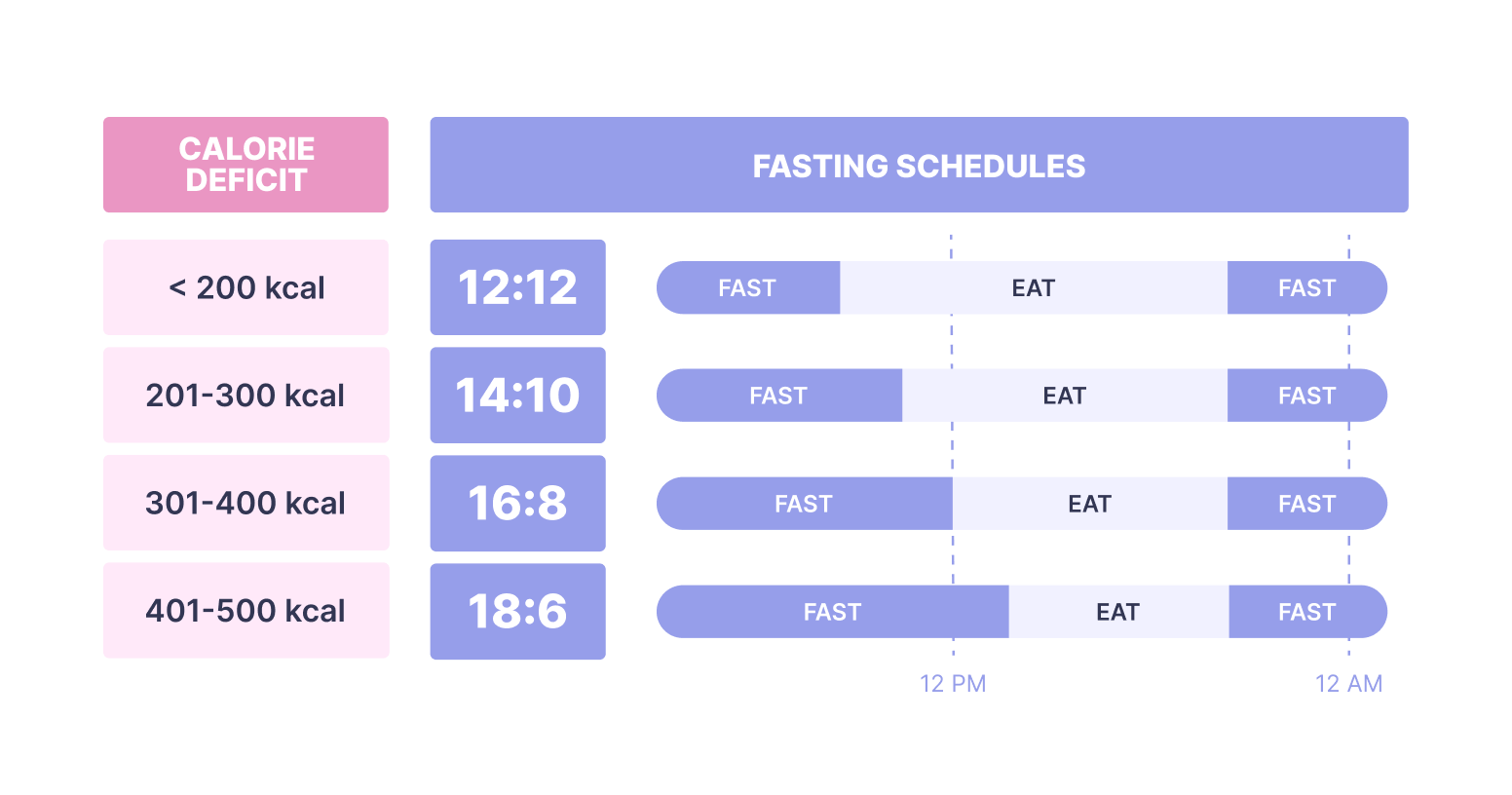Basal metabolic rate (BMR) calculator: calculate your basal metabolic rate

Is basal metabolic rate (BMR) the missing piece of your weight loss puzzle?
Find your basal metabolic rate with our BMR calculator below and learn how to use this crucial metric to lose weight, get fit, eat healthily, and improve your well-being.
How to use Simple’s BMR calculator
Using Simple’s BMR calculator is easy. Input your gender, age, weight, height, activity level, and goal. Using that data, the calculator will estimate your BMR. If you’ve been wondering, “What is my basal metabolic rate?” you’re in the right place!
What is basal metabolic rate (BMR)?
Basal metabolic rate is the number of calories you need to power every bodily function outside your conscious control. It takes energy to breathe, to pump blood around your body, for your hair to grow, and so on. BMR is the minimum amount of energy you burn to physically stay alive.

What is a BMR calculator?
A BMR calculator estimates your basal metabolic rate: the number of calories your body needs to sustain its basic functions,[1] like digestion and circulation, at rest.
How does it work?
Basal metabolic rate calculators translate factors like your age, gender, weight, etc., into the number of calories you need for basic physiological functions. It uses mathematical equations to do this.
What are the different BMR equations?
There are four equations used to calculate basal metabolic rate (BMR).
The Harris–Benedict equation [2] originally used age, gender, weight, and height. It now includes other factors, like activity levels, and reflects gender differences in metabolic rates.
The Mifflin St Jeor equation uses age, gender, weight, and height. It’s often preferred over the Harris–Benedict equation due to its increased accuracy. The American Council on Exercise (ACE) says this is a more accurate method for how to calculate your basal metabolic rate, and it’s the equation our BMR calculator uses.
The Katch–McArdle equation [3] and Cunningham equation [4] take into account lean body mass as well as age, gender, and weight. As such, these BMR equations may give more accurate BMR calculations for those with higher muscle mass or lower body fat.
Why is it important to know your BMR?
Knowing your BMR can help you make choices that support your health. For instance, your BMR gives you a starting point for assessing how many calories you need to manage your weight. That, in turn, can help you decide what to eat and how to structure your workout routine.
Are basal metabolic rate (BMR) and resting metabolic rate (RMR) the same?
While BMR and RMR are similar, they’re not the same.
To learn your RMR, you need to be relaxed but not completely at rest. You don’t need to be fasted. You may take your RMR at home after waking first thing in the morning, for example, or after sitting for a while in the evening.
To accurately measure your BMR, however, you must be both fasted and at complete rest. Remember, BMR is the amount of energy you need purely to exist. If you’re digesting your last meal or doing any activity (like fetching your stopwatch so you can calculate your RMR), your body is functioning above that level.
What are the main factors that can impact your basal metabolic rate?
The main factors [1] that impact your BMR include your age, gender, activity levels, body composition, and hormone levels. These factors affect your metabolic processes and energy expenditure in different ways.
- Age: As we get older and our lifestyle changes, we can become less active. This drop in activity can decrease our muscle mass [5] and increase our fat mass, lowering our metabolic rate.
- Gender: Men tend to have a higher BMR than women due to higher muscle mass and lower body fat.[6] This general difference in body composition comes from men’s higher testosterone levels.
- Body composition: Lean body mass, which includes muscles, organs, and bones, is more metabolically active than fat mass.[7] That means it takes more energy to maintain. If you have more muscle, therefore, you’ll have a higher BMR.
- Hormone levels: Hormones help regulate metabolic processes. Thyroid hormones are particularly important for maintaining metabolic rate.[8] If they get too low or too high, BMR can change. Other hormones, like cortisol and insulin, also impact metabolic rate, energy expenditure, and BMR.
- Genetics: Some people may have a naturally higher or lower BMR due to their genetic makeup.[9]
- Supplements: Using stimulating supplements, like caffeine [10] or a pre-workout, can speed up your heart rate, which in turn can increase your BMR.
- Pregnancy: Naturally, growing another human takes energy. Your body will be working harder around the clock to care for you and your baby. This will increase your BMR.
Some of these factors are outside your control, like age, gender, and genetics. Other factors are within your control, like body composition and supplementation. This is important to notice if you’re using your BMR to achieve a health or weight goal.
The goal of calculating your BMR

Calculating your BMR can help you improve your eating habits, energy levels, or other aspects of your health.
Your BMR is your calorie baseline — the amount you need to eat to function at rest. Knowing that baseline means you can develop nutrition and fitness plans that work for you and your goals.
If you’re managing your weight
BMR helps you know how many calories to eat to lose weight, gain muscle, or hold steady.
As body composition affects BMR,[6] your baseline will likely change as you progress. If you lose muscle as you lose weight, your BMR will drop. If you gain muscle, your BMR will increase. This is something to be aware of, as you may need to adjust your calorie target as you move forward.
If you’re meal planning
BMR can help you choose foods that give you optimal nutrition — think whole grains such as quinoa; lean proteins such as eggs, fish, and tofu; and plenty of fruits and vegetables — to help meet your energy needs.
Again, due to the influence of body composition, your food choices could help you increase your BMR. Eating enough protein [11] to support muscle maintenance and growth is a way to support your body here.
If you’re getting active
BMR helps you:
a) make sure you have enough energy in the tank for what you want to do; and
b) adjust your calorie intake up or down depending on your goal.
Knowing your BMR can help you fine-tune your nutrition and training to optimize your performance, recovery, and training outcomes.
If you’re setting goals
BMR can help you keep it real and set a manageable pace for achieving your goals.
If you’re tracking progress
How your BMR changes can show you how well you’re progressing and whether you need to adjust your action plan.
How to use BMR with intermittent fasting to lose weight

Your BMR tells you how many calories to eat for survival and can be useful for achieving weight loss. But keep in mind that it doesn’t take into account the extra calories you need if you lead an active lifestyle.
And what if you don’t want to get bogged down with counting calories? That’s where intermittent fasting can help. Here’s a lightning-fast tour through intermittent fasting for beginners, in case you’re new to it.
Intermittent fasting is when you eat within a specified window of time during the day and fast for the rest of that day. For example, with a 16:8 schedule, you’d eat during an eight-hour period — say between 10 AM and 4 PM — and fast for the remaining 16 hours — so from 4 PM till 10 AM the next day.
The length of your fast can be whatever you want. We recommend anything from 12 to 18 hours. Anything shorter tends to be less effective, and anything longer tends to be less safe (and no more effective).
Here’s how your BMR and intermittent fasting fit together:
- Calculate your BMR to learn how many calories you need to survive.
- Factor in the extra calories you need to support your activity levels and lifestyle and determine the deficit that helps you safely lose weight.
- Then, choose the intermittent fasting schedule that suits your needs. Each length of fast comes with a natural calorie cut. Have a look at the infographic below to see the calorie deficit each fasting schedule can help you achieve.
This one simple shift in how you approach eating can make things much simpler and less stressful while still giving you the results you’re looking for.
And yes, you can do intermittent fasting and keep working out! Exercise is a great pairing with fasting and has real potential to accelerate your progress. Just be mindful to eat enough during your eating window to support the exercise you’re doing (it’s hard to get results from exercise if you’re running on empty).
If you’re wondering, “Does intermittent fasting really work?” give it a try as long as it’s safe for you to do so. While intermittent fasting is safe and fasting is good for you as a whole, fasting isn’t a good fit for everyone. You should check with your doctor and get their permission before trying it if you:
- have type 1 diabetes
- have a BMI of less than 18.5
- are 18 and under or 80 years or older
- are pregnant, breastfeeding, or trying to conceive
- are on medication
- are extremely active
- have a history of or are currently diagnosed with disordered eating
Frequently asked questions about BMR
There’s no such thing as an “acceptable” BMR. It’s simply how many calories you need to exist. There’s no right or wrong number here. It’s just a piece of data. BMR varies based on factors like age, gender, and activity level. You can find out what yours is here.
In short, no. It’s not OK to eat less than your BMR, and we highly recommend that you don’t do it. Eating less than your BMR can compromise your body’s ability to perform essential functions. This amount of calories keeps your heart beating, your lungs breathing, and every other part of you working. Your health literally depends on it.
Thyroid hormones, particularly triiodothyronine (T3) and thyroxine (T4), play a crucial role in regulating basal metabolic rate.[12] Low levels of these hormones can lead to a decrease in BMR.
You can’t “kill” metabolism. Metabolism is complex and influenced by lots of factors, like diet, age, muscle mass, hormones, physical activity levels, sleep, and stress. But it’s always working. Instead of thinking about “what is the biggest metabolism killer,” consider what you can do to boost your metabolism. Eating a healthy, balanced diet, getting enough movement and sleep, and regulating your stress levels are all powerful actions you can take.
“Metabolic superfoods” are simply regular foods that are nutrient-dense and support a healthy metabolism and overall well-being, like lean proteins, leafy greens, whole grains, nuts, and fatty fish rich in omega-3 fatty acids. There are no secret superfoods.
If BMR isn’t hitting the right note for you, maybe our calorie calculator, macro calculator, or body mass index (BMI) calculator will set you on the right path for you.Bookmark this page, too, as we’ve got a total daily energy expenditure (TDEE) calculator, a calorie deficit calculator, and a body fat calculator on the way!

- Verma N, Kumar SS, Suresh A. An evaluation of basal metabolic rate among healthy individuals — a cross-sectional study. Bulletin of Faculty of Physical Therapy. 2023 Jul 19;28(1):1–6.
- Pavlidou E, Papadopoulou SK, Seroglou K, Giaginis C. Revised Harris-Benedict equation: New human resting metabolic rate equation. Metabolites. 2023 Jan 28;13(2).
- Molina-Luque R, Carrasco-Marín F, Márquez-Urrizola C, Ulloa N, Romero-Saldaña M, Molina-Recio G. Accuracy of the resting energy expenditure estimation equations for healthy women. Nutrients. 2021 Jan 24;13(2).
- Miller S, Milliron BJ, Woolf K. Common prediction equations overestimate measured resting metabolic rate in young Hispanic women. Top Clin Nutr. 2013 Apr;28(2):120–35.
- Palmer AK, Jensen MD. Metabolic changes in aging humans: Current evidence and therapeutic strategies. J Clin Invest. 2022 Aug 15;132(16).
- Bi X, Forde CG, Goh AT, Henry CJ. Basal metabolic rate and body composition predict habitual food and macronutrient intakes: Gender differences. Nutrients. 2019 Nov 4;11(11).
- Tizmaghz A, Bahardoust M, Hosseini M, Pazouki A, Alizadeh Otaghvar H, Shabestanipour G. Changes in body composition, basal metabolic rate, and blood albumin during the first year following laparoscopic mini-gastric bypass. J Obes. 2022 Jun 28;2022:7485736.
- Mullur R, Liu YY, Brent GA. Thyroid hormone regulation of metabolism. Physiol Rev. 2014 Apr;94(2):355–82.
- Konarzewski M, Książek A. Determinants of intra-specific variation in basal metabolic rate. J Comp Physiol B. 2013 Jan;183(1):27–41.
- Alshahrani SH, Atia YA, Badir RA, Almalki SG, Tayyib NA, Shahab S, et al. Dietary caffeine intake is associated with favorable metabolic profile among apparently healthy overweight and obese individuals. BMC Endocr Disord. 2023 Oct 20;23(1):227.
- Nunes EA, Colenso-Semple L, McKellar SR, Yau T, Ali MU, Fitzpatrick-Lewis D, et al. Systematic review and meta-analysis of protein intake to support muscle mass and function in healthy adults. J Cachexia Sarcopenia Muscle. 2022 Apr;13(2):795–810.
- Shahid MA, Ashraf MA, Sharma S. Physiology, Thyroid Hormone. StatPearls Publishing; 2023.
